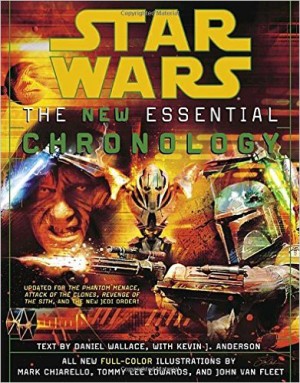“Turmoil has engulfed the Galactic Republic…”, as the the opening crawl from Star Wars: The Phantom Menace read. That sums up about nicely the initial reactions from many fans who’d invested in the years of Expanded Universe (EU) books, games and magazines etc. when Disney bought Lucasfilm, and shortly thereafter announced that all the material developed since 1983’s Return of the Jedi would be (ROTJ) largely would be non-canonical, and rebranded as Star Wars Legends. If the EU was a hodgepodge of material, no one would have bothered. But while there was a humongous amount of material created over the years – and there were even books written attempting to organize and weave all that stuff into a coherent narrative to make sense of it all – and not all of it was good, there were many common themes in the hundreds of EU publications that demonstrated a willingness to seriously explore and expand the fictional universe into something that sounded real. Even the more important when one realizes that as viscerally enjoyable as most of the SW prequel and original trilogies movies were, there was just so much implied – putting aside the simply routinely awful character dialogue – that someone had to make sense of all those broad plot lines we saw in the movies.

Most of my interest in the EU were in the post-ROTJ era and what happened after the second Death Star gets blown up and the Emperor gets tossed down the bottomless shaft. I haven’t read all the EU books – there’s a lot of it – but my sense of some of the most key themes in the post-ROTJ era were along these lines:
- That the Empire was now divided, with former Imperial warlords trying to carve out their own niches in the Galaxy, with the expected rivalry and in-fighting to follow. For them now, it was a fight to protect first whatever little they had left.
- That the New Republic was going through serious settling-in problems, and facing some of the same issues the early Empire experienced – and they had it easier as Palpatine had no compunctions using force to bend systems into his will.
- That the Jedi order was being revived, with the rebuilding of the Jedi Temple, with Luke becoming the first Master Jedi again. Luke traveling the galaxy to find force-sensitive pupils to be his first apprentices.
- That there were parts of the Galaxy untouched/not involved in the galactic war, and now emerging – sometimes they did not come in peace.
In other words, the galaxy was moving on and demonstrating a realistic process of transformation after the upheaval events of ROTJ. Stuff that felt like they were in the natural sequence of things that would happen in any other setting. As I mused in my last post, I was struck by that SW: TFA used essentially none of these, but instead:
- The Empire was not divided – only re-branded to The First Order, with no change to their agenda: still “Crush those Rebel – whoops – Resistance scum!”
- There was no New Republic, only the Resistance – and still on the run.
- There was a brief resurgence of a new Jedi order, before Kylo Ren turned it on his head, and Luke goes into hiding in apparent shame. Huh!
- No new factions joining into the mix – at this point of the seventh film anyway.
So, fundamentally, I found SW: TFA bland, if visually exciting and still enjoyable to watch from at least a superficial point of view. Hopefully things will improve in the next couple of films – we’ll see.
More in the next post.
Recent comments